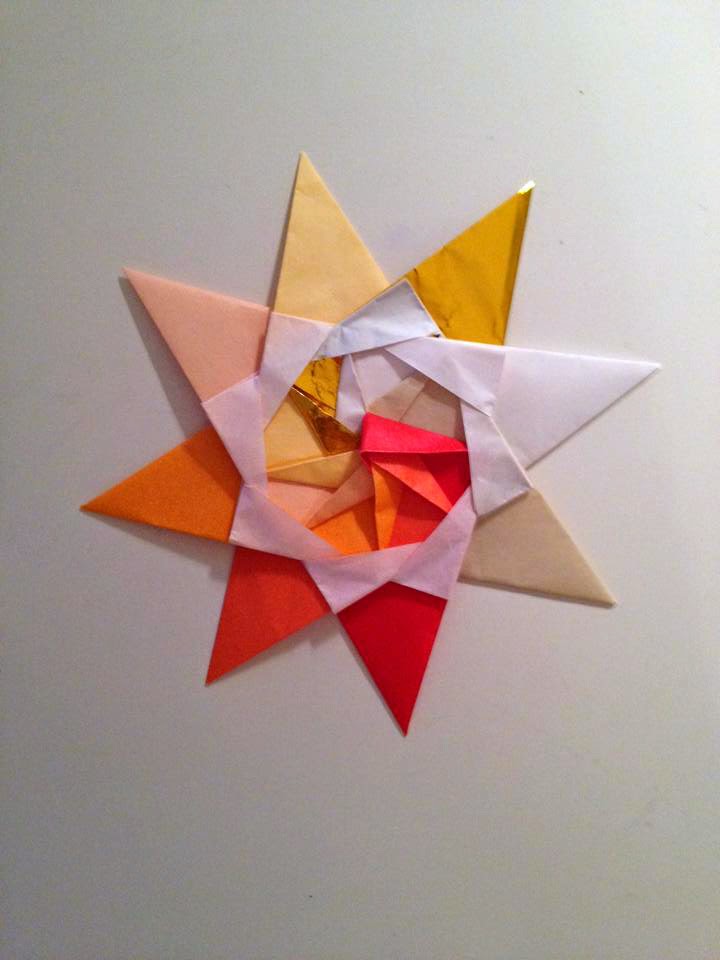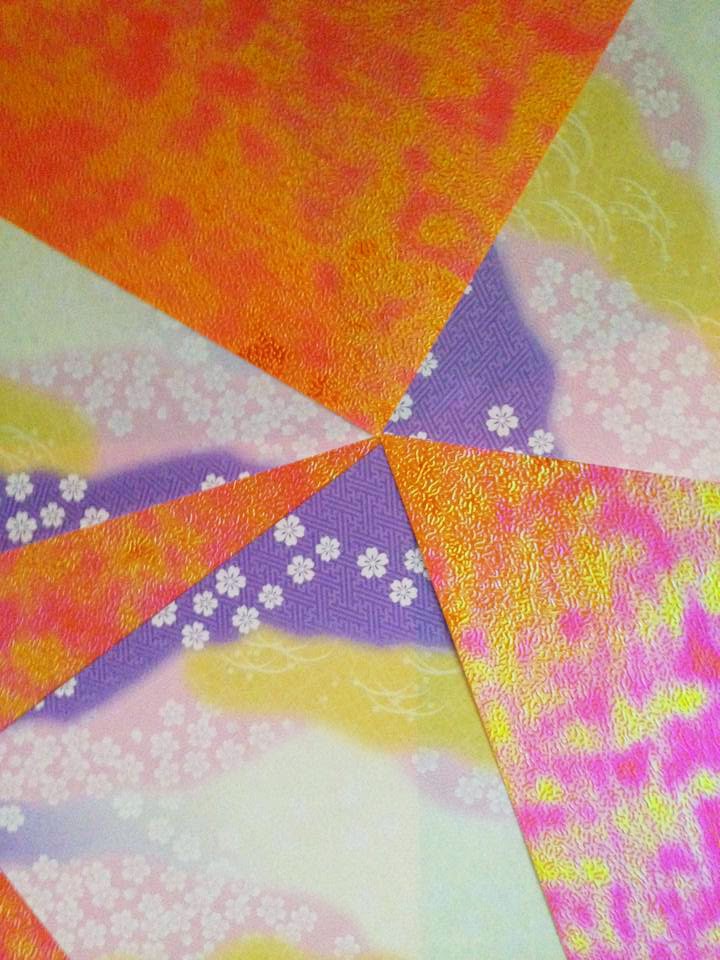Now the first task of this iteration was deciding the model. What challenges should I tackle next? Should I create a completely new figurine? Perhaps a cube? I really wanted to incorporate the lessons and forms I had learned from my first two iterations. For my earlier posts, I had learned the steps of a kusudama ball for my first iteration while exploring the themes of nature for my second one. Now what kind of figurine incorporates these two ideas? It is none other than Maria Sinayskaya's Little Roses Kusudama! This figurine was perfect for the third iteration.
I thought a colorful spectrum for the paper design would be a wonderful touch to this modernized figurine. It will also allow the rose detail to stand out. With the paper and model decided, it was time to find a video tutorial. Luckily the owner of the video from my first iteration had also made a tutorial for this figurine. The best part was the assembling step wasn't as difficult to follow this time. It was still fast forwarded but a portion of it was explained more thoroughly. I decided it was again time to face the assembling challenge in modular origami. This time perhaps I can be successful. That thought disappeared after hours of trying to assemble my first attempt.
I didn't realize the colorful spectrum I chose would actually become a downfall in the process. As for the folding steps, it was surprisingly easy to do although time consuming. It wasn't until I tried assembling the thirty pieces of folded paper that I realized the paper was too silky, causing the paper to constantly shift and becoming impossible to assemble together. The more I thought about it, the more it made sense; after all, to achieve this transparent quality, the paper itself should be made from a material other than your usual origami paper. Hence why the material felt so smooth (or slick even). This kind of material sadly is unfit for origami figurines that require assembling. But since hours have already passed, I didn't want to let this go to waste. I tried paper clips to hold the base of the figurine in place while building the rest of it, hoping to salvage my lost time.
Sadly this idea didn't work. The wonderful paper design I thought to be perfect for this iteration resulted in a second attempt to create this figurine. I was disappointed in myself for not realizing my mistakes sooner. After all, this was the same lesson I had learned from my first iteration. I suppose since I never used such a silky paper like this for origami, I never thought this type of paper would have such a drastic impact on the outcome of this figurine. So, I decided to use another paper design: the polka dots. It still had the color spectrum I wanted except in dotted form. As for the paper itself, the material was your average origami paper. The results? The assemblage step was definitely easier and the paper pieces did held together!

































